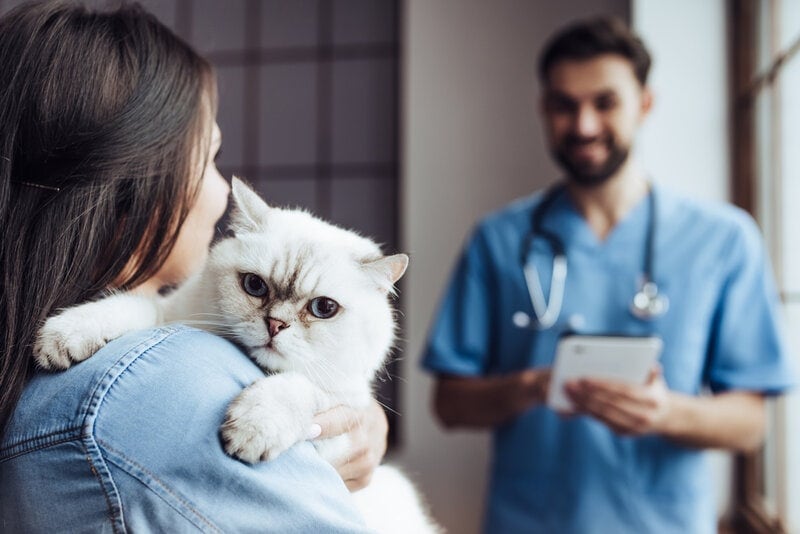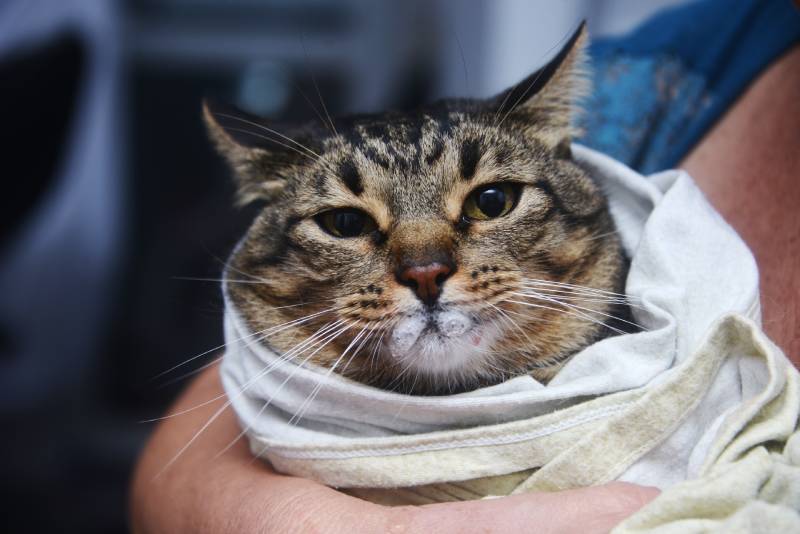Can You Spay a Pregnant Cat? Vet-Reviewed Potential Risks

Updated on
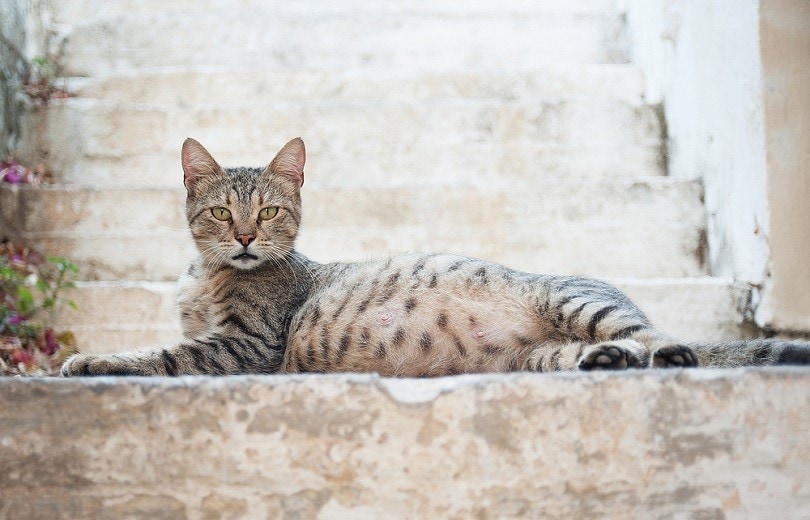
Spaying and neutering are two common surgeries performed on domesticated pets. They reduce hormone-driven behaviors and prevent unwanted pregnancies, but the decision isn’t always as simple as you might think.
If they’re not spayed, female cats go into their first heat between 4 and 6 months of age. While this doesn’t matter that much for single-cat households that keep their female cat indoors, outdoor cats or households with intact males can be taken by surprise by a sudden pregnancy. It’s these unexpected and unwanted pregnancies that lead to many young cats being deserted at shelters as strays or otherwise left to fend for themselves.
There’s an ongoing debate about whether you should spay pregnant cats. While spaying a pregnant cat is technically possible, it also means abortion of the unborn kittens. This guide will tell you everything that you need to consider before choosing this option for your cat.
Can You Spay a Pregnant Cat?
Spaying a pregnant cat works the same way that it would with non-pregnant animals, with a slight difference. It also involves aborting the developing kittens. Abortion is a highly controversial topic, and it’s the biggest reason that there’s so much uncertainty surrounding spaying pregnant cats.
There are two sides to this argument, but it’s still a gray area to delve into.
First, aborting a cat’s pregnancy prevents more kittens from entering foster homes, shelters, and rescues that are already overcapacity. This gives cats already in the system more time to find their forever homes instead of being euthanized.
On the other hand, many people dislike taking lives at all—even if the kittens aren’t born yet—and believe that it’s perfectly acceptable to allow the pregnancy to come to term and spay the female cat after she’s given birth.
Regardless of the arguments against spaying pregnant cats, the procedure is often successful and considered safe. The only difference from normal spaying surgeries is the presence of fetal kittens.
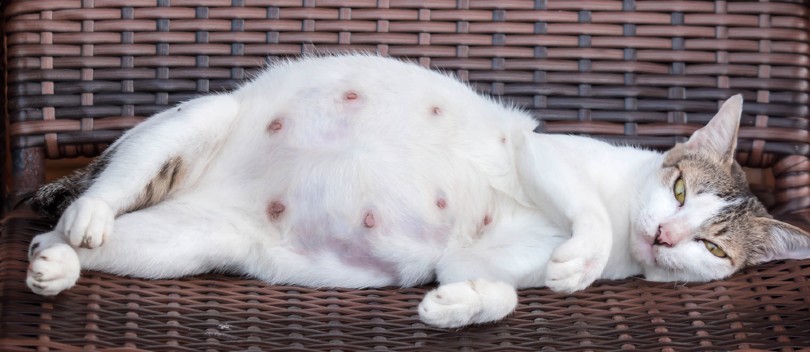
When Should You Spay a Pregnant Cat?
Despite the controversy, there are a few reasons why spaying a pregnant cat may be necessary.
Overpopulation
More often than not, shelters and rescues will spay or neuter new arrivals to prevent future pregnancies. They may also abort existing pregnancies because many of these facilities are already overcapacity, and a litter of kittens means less space for older cats that need homes too.
Intact cats can also become pregnant again shortly after giving birth, even if they’re still weaning their existing litter. Their gestation period is only 63–65 days on average, which enables them to become pregnant several times a year. This short period and the size of the average cat litter are why there are so many cats in shelters or on the streets.
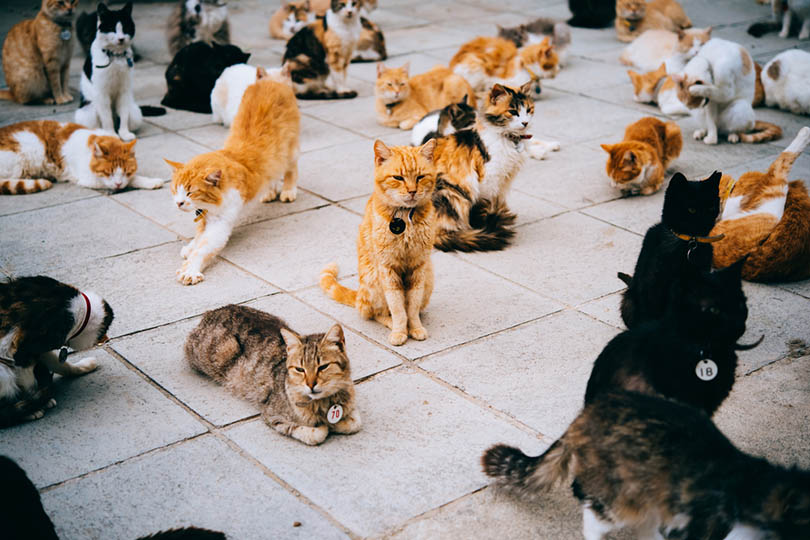
Age
There are various health risks associated with pregnancy, especially for young or older cats. They are either not developed enough or are too old to bear kittens. This also goes for cats that aren’t healthy enough to carry a litter to term. In these cases, it’s safer to abort the pregnancy and prevent future ones by spaying the cat.
While it does mean aborting the fetal kittens, your adult kitty won’t be at risk of illness or death caused by the pregnancy or birthing process.
How to Decide Whether You Should Spay Your Pregnant Cat
If you need to decide whether to abort your cat’s pregnancy or not, carefully consider these questions. Also, ask your veterinarian for advice if you’re still not sure about the procedure, as they’ll be able to inform you of all the pros and cons and help you make an educated choice.
How Old Is Your Cat?
The age of your cat is one of the biggest health concerns regarding pregnancy. You might want to keep the kittens for moral reasons, but if your cat isn’t healthy enough to carry them to full term, you’ll be risking the unborn kittens’ lives and that of the mother. For cats that are too young or elderly to give birth, the safest thing to do is terminate the pregnancy.
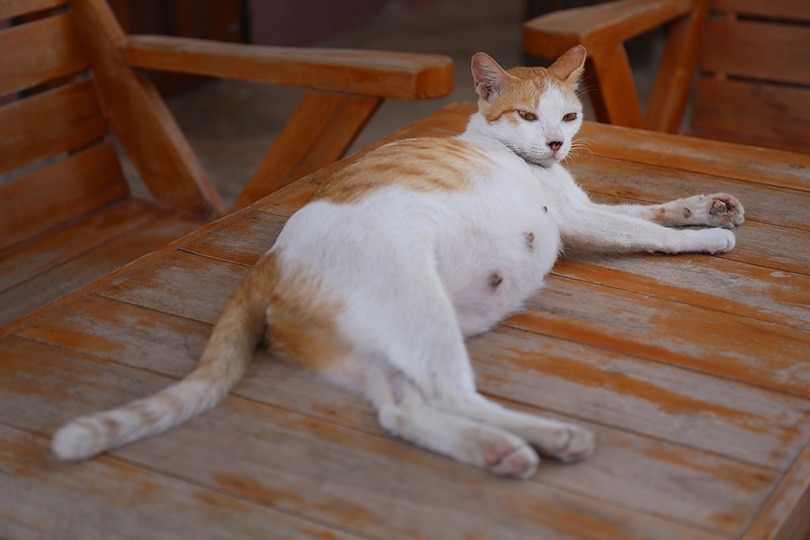
How Far Along Is the Pregnancy?
It’s not always clear when cats become pregnant, and many owners don’t realize it until their cat gives birth. If you manage to catch the pregnancy early enough, it’s important to consider how far along she is.
Many people believe that there’s a point at which spaying a pregnant cat should be avoided. The closer the cat gets to full term, the more people disagree with the idea of aborting the unborn kittens. Many shelters and rescues will sometimes let pregnant cats give birth if they’re close to their due date.
Will the Kittens Have a Home to Go To?
Consider talking to your friends and neighbors to see if they’re interested in taking one of the kittens when your cat gives birth. If enough people are interested, you’ll be able to establish whether it’s a good idea to allow your cat’s pregnancy to continue. Being able to give the new kittens safe, loving homes will help them avoid extended stays in shelters or being abandoned on the streets.

Can You Care for the Kittens?
Cats usually have between four and six kittens per litter. For small, low-income households, this means many extra mouths to feed. Most people, understandably, don’t have the means to care for so many pets.
While you might have found homes for your kittens to go to, they shouldn’t be separated from their mother too early. This means their initial care—for the first 8 weeks, if not longer—is your responsibility. You should also consider the additional medical cost of the kittens, vet visits, cat milk replacer formula, deworming, or first vaccinations that might end up adding up to the bill.
You have to remember the mother cat’s welfare too. You’ll have to take care of all her needs during her pregnancy and help her tend to her kittens after they’re born.
What Do You Believe?
When you’re faced with a decision regarding your cat, there’s no right or wrong answer. In the end, the final decision is yours alone. Provided that you can care for your pregnant cat and the kittens until they find homes, you may want to allow your cat to give birth.
Your personal feelings about abortion are valid too. Sometimes the moral arguments are enough for you to decide whether to allow your pregnant cat to come to full term.
Final Thoughts
Spaying pregnant cats is possible and no more dangerous than spaying cats that aren’t pregnant. However, the biggest issue is the lives of the fetal kittens. By removing your cat’s ovaries and uterus during their pregnancy, you also have to abort the kittens. This choice makes this procedure highly controversial for many people.
By carefully considering all your options and your own opinion about abortion, you’ll be able to better decide whether spaying your pregnant cat is the right choice for your family.
Featured Image Credit: Jim Polakis, Shutterstock




